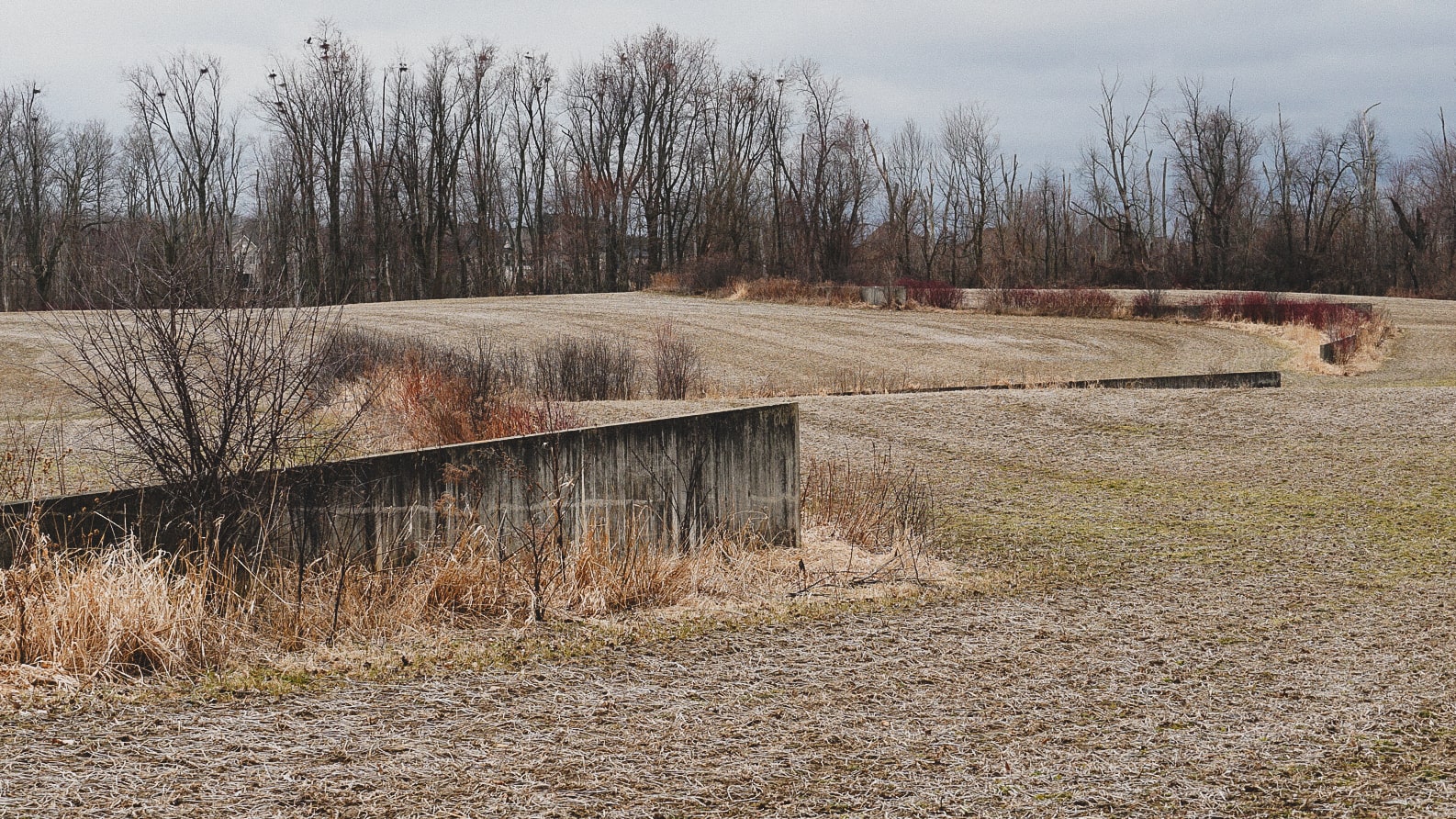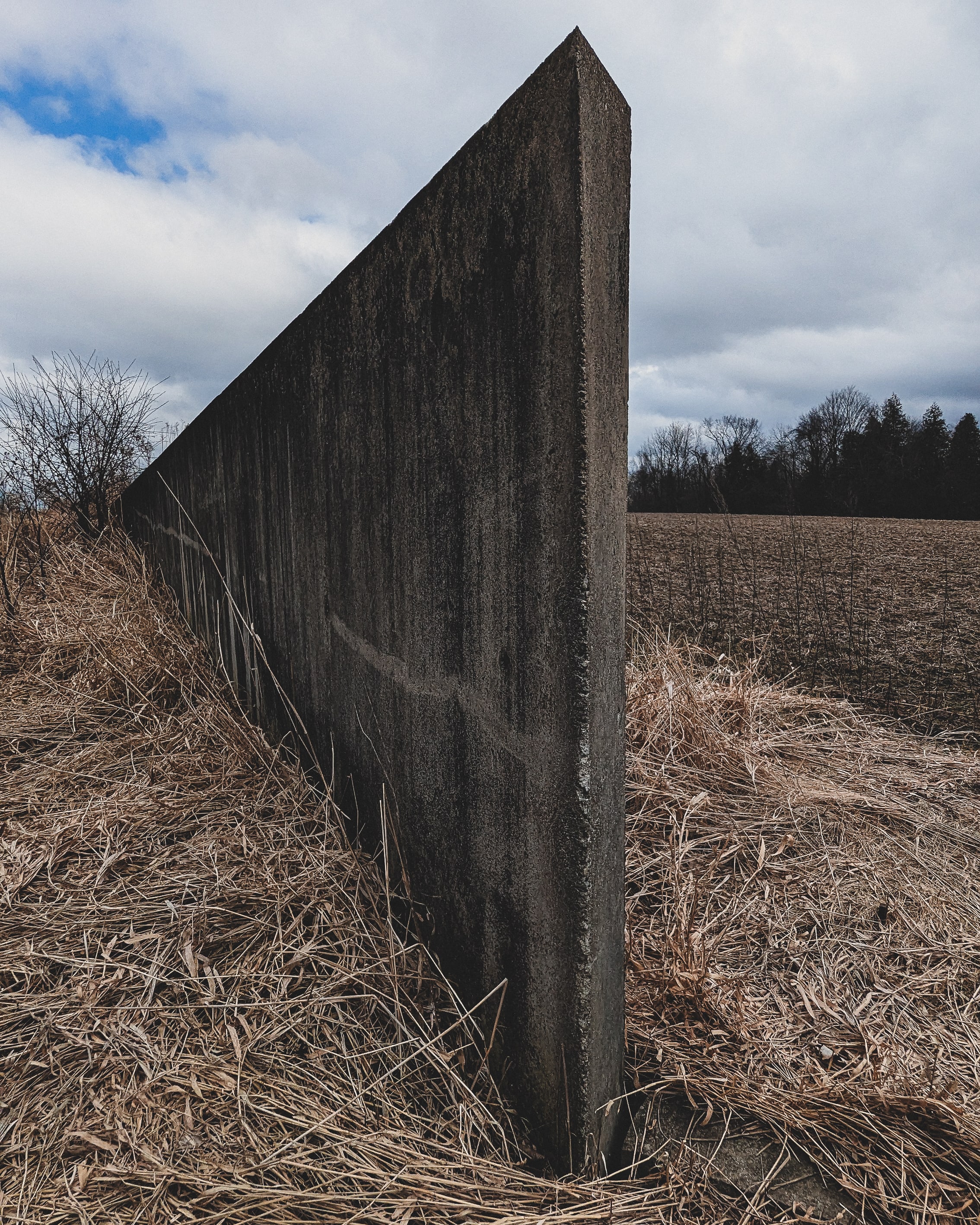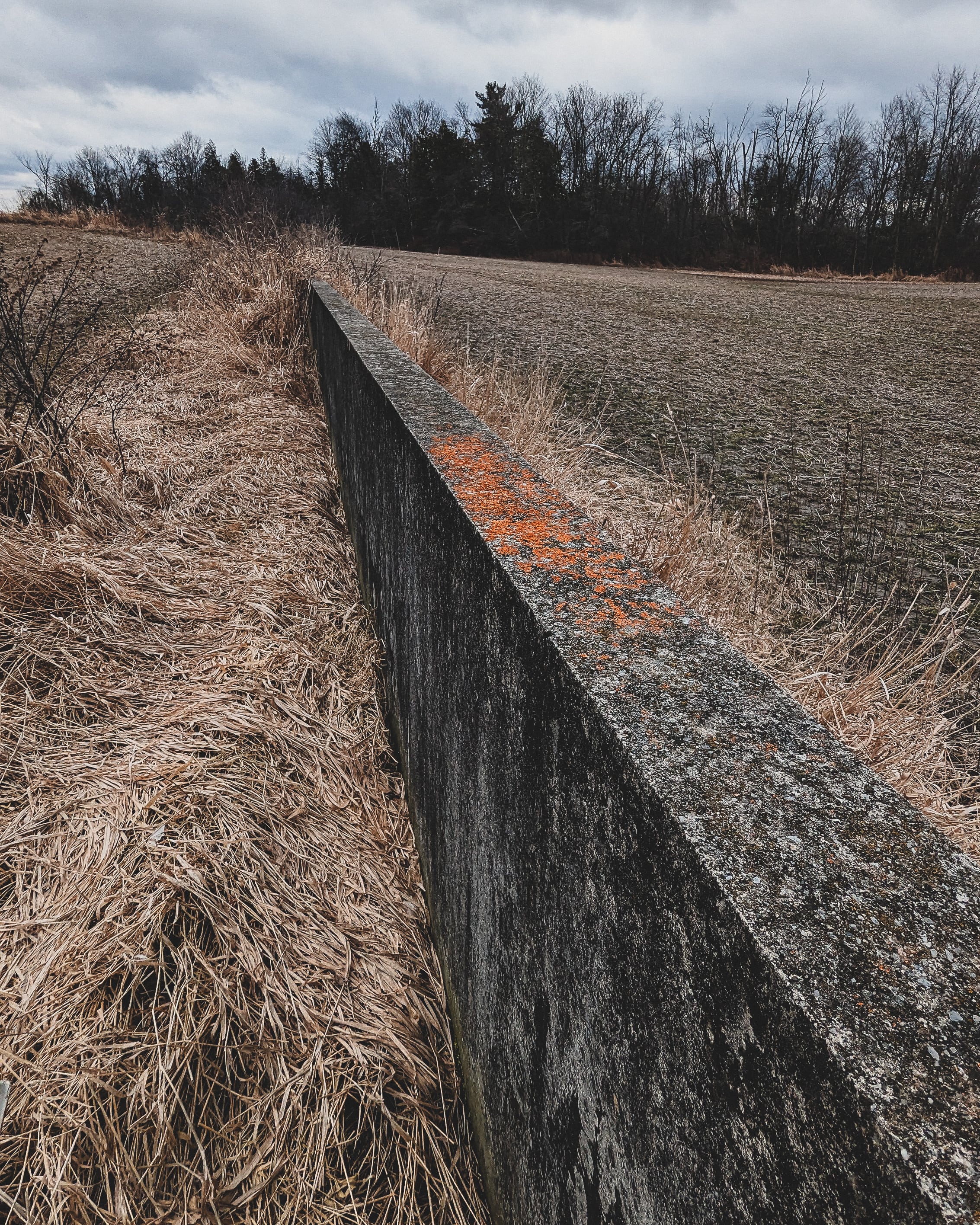Richard Serra's Shift
“To see is to think, and to think is to see.” —Richard Serra
Hidden in a muddy field surrounded by woods and wet bog on the periphery of King City, Ontario, lie six concrete walls shifting across a dogleg valley. Overgrown with grasses, thorn bushes and red twig dogwood, what one might easily mistake for an abandoned farmstead foundation is, in fact, an early landwork by Richard Serra, considered one of the world’s most innovative and original contemporary sculptors.
At the time of its construction in 1970, Serra had visited Brâncuși and Giacometti in Paris, was well-established in New York art circles with the likes of Steve Reich and Philip Glass, and had made a name for himself as an emerging artist who was radicalizing the definition of sculpture. The unexceptional Ontario potato farm was owned by the family of art collector Roger Davidson, who, in exchange for two small sculptures, allowed Serra to construct what would be Serra’s largest site-specific work, “Shift”.
Camouflaged in a rolling dip between two hills, “Shift” isn’t easy to find. I spent over an hour looking for it, trespassing over fenced-in farmland with my pants hiked up over my boots, slogging through the mire. From the top of the hill, the line it draws across the valley is indistinguishable from a brook overgrown with weeds, but as you approach, the stepped partitions take on new dimensions.
“What I wanted was a dialectic between one’s perception of the place in totality and one’s relation to the field as walked. The result is a way of measuring oneself against the indeterminacy of the land.”1
Without local points of reference to gauge distance and depth, navigating rolling fields can feel as indeterminate as sailing on open water. “Shift” is like a barometer forecasting subtle changes in an otherwise nebulous landscape. Instead of viewing a figure on a pedestal or a painting in a frame, you’re drawn into the field to actively participate in the work. As you follow its contour, the partitions form shifting horizons without a fixed center, ushering you into moving, turning, and seeing the land from various elevations. Each step is a transversal line that elevates, extends, compresses or intensifies space. Rather than a purely visual or conceptual understanding of art and landscape, the phenomenological experience of walking reflectively through “Shift” is essential to its meaning. Arriving lost and disoriented after stumbling through bog and field only amplifies its grace as a calibrating force that, rather than obscuring or distracting from the land, speaks to it. If one can fold form seamlessly into landscape, this is how it’s done.
“From the top of the hill, looking back across the valley, images and thoughts are remembered which were initiated by the consciousness of having experienced them. This is the difference between abstract thought and thought in experience.”1
Serra was known for writing lists of verbs he would sculpt against, reflecting a move from sculpture as representation to abstraction distilled and embedded in space. Sculpture no longer needed to be about fixed objects but dynamic fields; verbs rather than nouns. In prioritizing the physical properties, capacities and character of his chosen materials, he foregrounded the artist as mediator of matter and embodied perception. Serra typically worked in rubber, iron and steel and rarely concrete, which he considered too architectural, but the scale and horizontality of “Shift” made concrete the practical choice. Over 50 years old, it is weathered but has buttressed a handsome patina of moss, lichens and fungi as it zigzags through time.
Serra passed away this week at the age of 85. Extending beyond its meaning intended by the artist or as a testament to his creative genius, “Shift” now stands as a small act of resistance against the most wasteful of Toronto’s suburban sprawl that encroaches on the site from every direction. Serra’s site-specific work was often controversial. In 2010, the Toronto developer who now owns the land announced a plan to develop it for more monster homes, the worst of King City. Since then, the Township of King voted to protect “Shift” under the Ontario Heritage Act and the land has been protected, precariously, as a green space under the Oak Ridges Moraine Conservation Act. Let’s keep it that way.
That “Shift” is now a feral sculpture makes it all the more appealing. Rewilding and mostly forgotten, it’s like some ancient henge, a lost memorial to 70s postminimalism that somehow landed in rural Ontario. Were it located downtown in an urban space commissioned by some wealthy art enthusiast —like Serra’s “Tilted Spheres” (2002) at Toronto’s Pearson Airport— I probably wouldn’t give it much thought. Here, rather than crowds of tourists or gallery goers, “Shift” is quietly visited by deer, wild turkeys and a neighboring heronry that come to shelter and graze in its grasses, providing a much-needed wildlife corridor that, if we only had our priorities straight, should be more revered and protected than any artwork.


